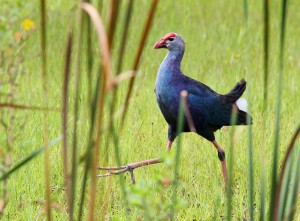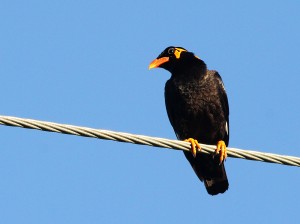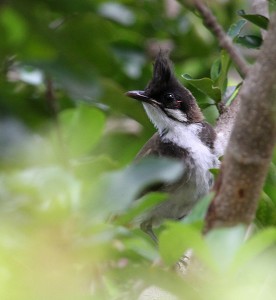Florida, Part 1: Recording the Exotic

Exotics tend to have a bad rap among North American birders. They’re either disparaged, or more often, ignored entirely. This is a bit of a shame – they’re not “bad” birds, so to speak. It isn’t their fault they’re introduced to places far from their home range. But something about them makes them slightly distasteful to the majority of us. And I’ll admit there have been times when I’ve fallen into the same boat. I’ve even flatly refused to go up into the Ruby Mountains of Nevada to twitch Himalayan Snowcock. But when I was offered the chance to go to Florida to get recordings of a number of target species, including exotics, I jumped at the chance.
Part of that was a chance to go to Florida, which offered the largest block of birds I haven’t recorded before. But I’ll admit I was a bit curious to record exotics as well. Almost nobody has spent effort on documenting their vocalizations in their introduced ranges, and it would be a challenge.
So what follows below will be the very first earbirding trip report, of my trip to Florida.
A goodly portion of my time was spent in the, ahem, noisy environs of Miami getting recordings introduced species. Some of these will be very familiar to the ABA birder: Red-whiskered Bulbul, Budgerigar, or Common Myna, for example. Others have received some press recently, but tend to fly more under the radar: Purple Swamphen, Mitred Parakeet, etc. And some very few people ever even think about: Egyptian Goose, Indian Peafowl, even Red Junglefowl.
Common Mynas (Acridotheres tristis) have become quite common in southern Florida. They can be surprisingly hard to hear, though – during the day they tend not to make too much noise, and they usually occur in very urban areas. But a pre-dawn spent in a deserted parking lot in Kendall got me some good cuts of their cool songs:
Hill Mynas (Gracula religiosa) are the cooler, bigger cousins of Common Mynas. Not only do they have looks going for them, they are probably the coolest sounding exotic in Florida. Here are a couple of recs of a pair duetting at Matheson Hammock:
Recently getting some press for their remarkable expansion into the wetlands of South Florida are the big ugly cousins of Purple Gallinule, Purple Swamphen (Porphyrio porphyrio). In their native range they’re known as raucous, noisy birds, but in Florida they are surprisingly quiet. I had to work on this species for a while before I found a pair that would vocalize, but when I did I was able to get a good representation of their repertoire:
Parrots feature prominently in the introduced avifauna of Florida. Parrots are the perfect birds to record in noisy urban environments – they tend to be gregarious, fairly easy to find, and LOUD. That is a huge advantage when having to deal with lots of background noise. I was able to get recordings of a number of species, established and not so established. Some of the species below are ABA countable (like White-winged Parakeet (Brotogeris versicolurus) and Budgerigar (Melopsittacus undulatus)), but are actually fairly local and hard to find to nearly gone, while others that are not yet countable (like Mitred (Aratinga mitrata) and Nanday (Nandayus nenday) Parakeets) are much more well established:
Egyptian Goose (Alopochen aegyptiaca) is a surprisingly common introduced bird that most ABA birders haven’t even heard of. Luckily they’re quite noisy:
Red-whiskered Bulbul (Pycnonotus jocosus) has gotten a lot of attention due to the fact that it’s ABA countable. But despite this, it is actually quite a bit harder to find than many non-countable exotics. It is also rather difficult to get recordings of, and the best ones I managed were of a juvenile bird. I did also manage to get one recording of call from an adult, but no song.
|
|
Stay tuned for part 2 of the trip report, which will follow in a few days…



